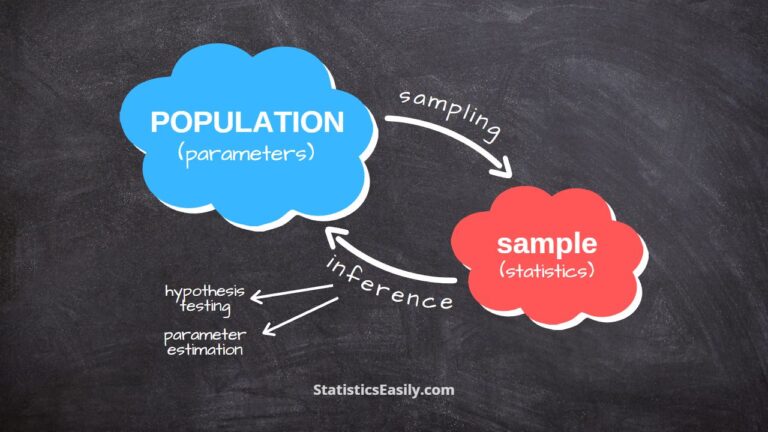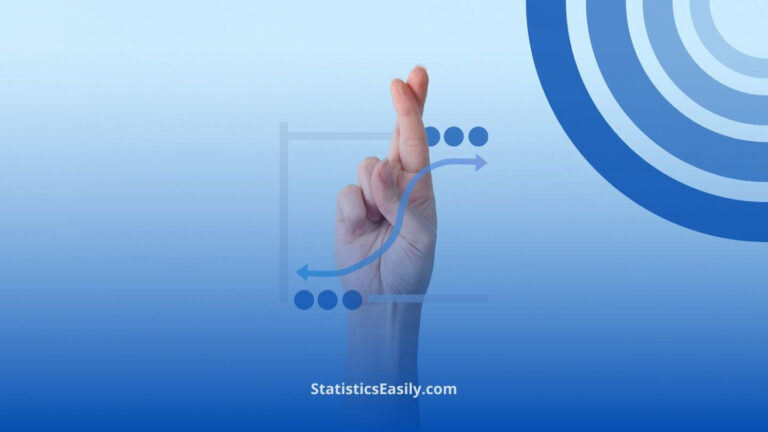Statistics vs Parameters: A Comprehensive FAQ Guide
You will learn the essential differences between statistic vs parameters for accurate data analysis and effective communication of findings.
Highlights
- Statistics describe sample data, while parameters describe entire populations.
- Statistics are subject to variability due to sampling, whereas parameters are fixed values.
- Sample mean and sample standard deviation are typical examples of statistics.
- Population mean and population standard deviation are examples of parameters.
- Using statistics, we can estimate parameters and draw inferences about populations.
Introduction
Starting an exploration into the realm of data analysis and statistics can present an exhilarating and daunting experience.
As you dive deeper into the subject, you’ll encounter many fundamental concepts that form the basis of data-driven decision-making.
Two such critical concepts are statistics and parameters.
This FAQ aims to provide a concise yet comprehensive overview of these essential concepts, addressing common questions and misconceptions that often arise.
By understanding the differences between statistics and parameters and how they’re used in practice, you’ll be better equipped to conduct accurate data analyses and effectively communicate your findings.
Statistic vs Parameter FAQ
Q1: What is a statistic? A statistic is a numerical measure that describes a characteristic of a sample, which is a subset of a larger population. Statistics are calculated using sample data and serve as estimates of the actual population values.
Q2: What is a parameter? A parameter is a numerical measure describing an entire population characteristic. Parameters are fixed values that cannot be directly calculated from the data, as they would require information about the whole population. They are often estimated using statistics.
Q3: How are statistics and parameters related? Statistics and parameters are related in that both describe the characteristics of data sets. While statistics are used to describe sample data, parameters describe population data. Statistics can also be used to estimate population parameters.
Q4: What is the difference between a statistic and a parameter? The primary difference between statistics and parameters is the data they describe. Statistics pertain to sample data, while parameters concern the entire population. Furthermore, sampling subjects statistics to variability, whereas parameters are fixed values.
Q5: Why are statistics vital in data analysis? Statistics are crucial in data analysis because they allow analysts to draw inferences and make data-driven decisions based on a subset of the data without collecting information about the entire population.
Q6: How do I know if I should use a statistic or a parameter? Using a statistic or a parameter depends on the available data and the research question. For example, if you can access a sample of data and want to make inferences about the entire population, you would typically use a statistic. If you are interested in describing the whole population, use a parameter.
Q7: What are some standard statistics and their corresponding parameters? Common examples of statistics include sample mean (average value of a sample) and sample standard deviation (a measure of the dispersion of values within a sample). Corresponding parameters include population mean (average value of an entire population) and population standard deviation (a measure of the dispersion of values within a population).
Q8: Can statistics always accurately estimate parameters? While statistics can be used to estimate parameters, the accuracy of the estimates depends on factors such as sample size, data quality, and the appropriateness of the statistical methods used. Larger sample sizes and better data quality can lead to more accurate estimates. Still, it is essential to consider other factors as well.
Q9: What are some pitfalls to avoid when using statistics and parameters? Some pitfalls to avoid when using statistics and parameters include: Assuming that statistics and parameters are interchangeable; Ignoring the variability and uncertainty associated with statistics; Misinterpreting or miscommunicating statistical results; Relying solely on sample size for accuracy without considering data quality or statistical methods.
Q10: How can I improve my understanding of statistics and parameters? To enhance your knowledge of statistics and parameters, consider taking statistics or data analysis courses, reading books or articles on the subject, and gaining hands-on experience through projects or internships. Additionally, seek guidance from experts in the field and practice interpreting and communicating statistical results effectively.
| Statistic | Parameter | |
|---|---|---|
| Meaning | A measure that describes a characteristic of a sample. | A measure that describes a characteristic of a population. |
| Statistical Notation | x̄ = Sample Mean s = Sample SD p̂ = Sample Proportion x = Data Elements n = Size of sample r = Correlation coefficient |
μ = Population Mean σ = Population SD P = Population Proportion X = Data Elements N = Size of Population ρ = Correlation coefficient |
🛑 Stop Struggling with Data Analysis
Find Out How Our eBook Can Turn You into an Expert Overnight!
Conclusion
This article explored the essential concepts, differences, and practical applications of statistics and parameters.
By addressing common questions and misconceptions, we hope to have provided a solid foundation for understanding these critical aspects of data analysis.
As you continue your journey in data science, remember to stay curious and keep learning.
The more you know about these fundamental concepts, the better equipped you’ll be to tackle real-world data challenges and make data-driven decisions that lead to meaningful insights and impactful outcomes.
| Concept | Description | Example |
|---|---|---|
| Statistic | A numerical measure describing a characteristic of a sample | Sample mean (average value of a sample) |
| Parameter | A numerical measure describing a characteristic of an entire population | Population mean (average value of a population) |
| Sample Data | A subset of a larger population | Data collected from a random sample of customers |
| Population Data | Data representing the entire group of interest | Data for all customers of a company |
| Estimation | The process of using sample data to approximate population parameters | Estimating population mean using the sample mean |
| Variability | The degree to which statistics can vary due to sampling | Sample standard deviation |
| Data Quality | The accuracy, completeness, and consistency of data | Ensuring the data collected is free from errors and inconsistencies |
| Misconceptions | Common misunderstandings or errors about statistics and parameters | Believing that statistics and parameters are interchangeable |
| Communication | Presenting and explaining statistical results to others | Using clear visuals and concise language to convey findings |
| Practical Application | Using statistics and parameters in real-world scenarios | Estimating a product's average rating from a sample of user reviews |
Explore FREE samples from our recently released digital book and unleash your full potential.
Immerse yourself in advanced data analysis techniques, master the art of determining optimal sample sizes, and learn to communicate results effectively, clearly, and concisely.
Click the link to unlock a treasure trove of knowledge: Applied Statistics: Data Analysis.











